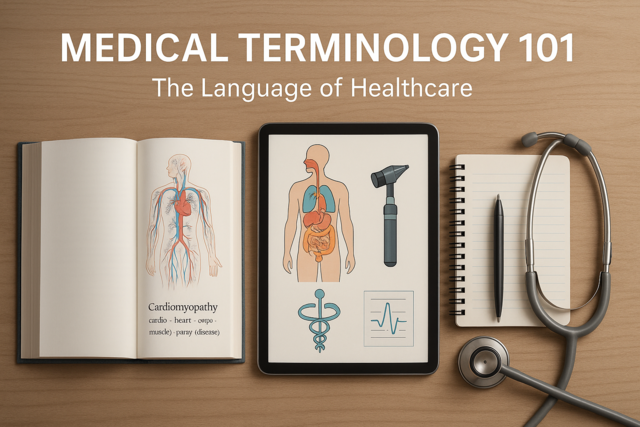When anybody experiences a concussion, the hoped-for outcome is for a full recovery and return to good health. Complications are never the desired outcome, but one has to be prepared to deal with complications should they arise.
Second-Impact Syndrome
While CTE typically occurs after the accumulation of multiple head injuries, there is still a present danger upon receiving just two concussions. This complication arises when the injured person receives a second concussion without having time for the symptoms of the first concussion to go away. A situation like this is particularly prevalent in sports, when a player gets hit on the head and tries to ignore their symptoms in order to keep playing. By continuing to play, they're putting themselves at risk for a second, more harmful concussion.
What occurs in the brain after that second impact is a sudden swelling, due to the loss of the brain's ability to auto-regulate intracranial and cerebral perfusion pressures. This can lead to unconsciousness, respiratory failure, and even more severe consequences such as death. Even two very mild concussions can lead to second-impact syndrome, as it does not require a severe head trauma to experience it.
Despite the fact that this condition is caused by two mild head injuries, the long term effects for anybody who survives with second-impact syndrome resemble those of a severe traumatic brain injury. Unfortunately, not everybody who experiences second-impact syndrome will even live to see those long-term effects, as the swelling in the brain is usually rapid and fatal. The patients that do survive will live with permanent changes to their speech, cognitive skills, vision, perception, social interactions, and a number of other neurological symptoms.
Post-Concussion Syndrome
This complex disorder occurs when concussion symptoms extend beyond what they are expected to, usually upwards of three months after the initial injury. Common issues are headaches and dizziness that last for weeks or months after the initial injury occurs. No association has been found between the occurrence of post-concussion syndrome and the severity of the injury, and it is also not linked with loss of consciousness. Because of the lack of correlation, there is really no predictor as to whether an individual with a concussion will get post-concussion syndrome.
Treatment for post-concussion syndrome is focused on easing the specific symptoms that the individual experiences.2These symptoms could include:
-
Headaches
-
Dizziness
-
Irritability
-
Anxiety
-
Loss of concentration
-
Sensitivity to bright lights or loud noises
-
Ringing in the ears (tinnitus)
-
Vision problems
-
Fatigue
-
Lack of energy
-
Sleep disturbances
-
Changes of appetite
-
Depression
-
Forgetfulness
-
Memory trouble
Just one look at the sheer number of potential symptoms can make it easy to understand why there is no single treatment for all post-concussion syndrome cases. Instead of having a singular method that eases all possible symptoms, it is up to the doctor to tailor the approach to the specific patient and their symptoms. If migraines are the primary symptom, then they might prescribe pain medication to help treat that. Antidepressants and therapy might be the suggested approach for dealing with the psychological symptoms, such as anxiety and depression.
It remains unknown why some people suffer from persistent post-concussion syndrome and others do not. The exact cause is unknown, though multiple theories have been proposed to explain the circumstances. One theory attributes it to chemical imbalances in the brain, while another credits it as an emotional or psychological response to the injury, almost like a milder form of post-traumatic stress disorder. Most cases of post-concussion syndrome will resolve themselves in a matter of three to six months, and it is uncommon for symptoms to persist beyond a year.
Post-Traumatic Seizures and Epilepsy
Seizures have a frequent correlation with traumatic brain injuries, and the prognosis can often be determined by the timing of these seizures in relation to the injury. A seizure that occurs in the first week following a brain injury is labeled as an early post-traumatic seizure, and the chances of having another seizure down the road are about 1 in 4.3 A seizure that occurs later than that initial week is labeled as a late post-traumatic seizure, and the chances of a recurrent seizure are about 4 out of 5. The further along that first seizure occurs, the more likely it is that the injured individual will experience another seizure weeks or months down the road.
In order to recognize when somebody is having a seizure, it is important to understand what this involves. It is usually associated with strange body movements, either shaking or stiffness. Other symptoms are a sudden tiredness, unresponsiveness, or inability to speak and communicate.
Apart from the singular seizures that somebody might experience, there is also the complication of epilepsy. This condition is when seizures are recurrent, and a majority of individuals who suffer from it will continue to have seizures throughout their whole lives. Reaching this level of severity is not common for simple, one-time concussions, but it is a complication that could arise with worse brain injuries. Even the combination of multiple mild brain injuries could lead to the complications of a severe injury.
For an individual who suffers from epilepsy, there are certain antiepileptic drugs used to try and help control seizures. However, depending on variable factors of the specific patient, there are some side effects from the medication that could present some issues. Figuring out what works for each individual should be between the patient and their doctor, and should factor in variables such as type of seizures, age, and health.
Convulsive Motor Phenomena
This is a type of convulsing that would occur immediately after the initial injury, so for an athlete playing a game, this would most likely occur while they are still out on the field or court. It may appear dramatic and this could startle some bystanders, but the important thing to note is that they are usually benign.5It does not typically require any anticonvulsant therapy, since it does not continue beyond what happens after the initial injury.
Depression
Evidence has pointed towards an increased risk for developing depression after receiving multiple concussions. It could be particularly prevalent for athletes or individuals who previously suffered from depression, and the effects of multiple concussions only worsens their issue. Since mild traumatic brain injuries affect the way that the brain functions, this means that the damage can affect how a person processes emotions or feelings, and whether or not proper chemicals get released in their brain.
Mild Cognitive Impairment
Although there shouldn't be cognitive decline after just one concussion, there is risk of mild cognitive impairment later in life following multiple concussions. For some, this decline could be so subtle they may not even notice, or it may bring on an earlier state of impairment than what they would have experienced naturally.
Bleeding, Blood Clots, and Hemorrhages
A simple concussion would not cause bleeding from the brain, but one complication that could arise is that the hurt individual believes they only have a concussion and not a worse injury. It is necessary, however, to check for more extensive injuries after a blow to the head, because there could potentially be bleeding on the brain. This could lead to drowsiness and prolonged confusion, as well as more severe symptoms if the condition worsens and remains unrealized.
Another type of injury associated with traumatic brain injuries is a subdural hematoma, which is bleeding between the brain itself and the dura mater, which is essentially the brain cover. The blood vessels that run through this subdural space face a risk of tearing or bursting during a brain injury. Since the skull encloses the brain in a small space, this bleeding can build up and prevent the flow of oxygen-rich blood to the brain. This limits the brain's access to oxygen, which is critical to its health, and lack of oxygen can lead to brain swelling. The most efficient way to treat this condition is through surgery to remove the excess blood and provide oxygen back to the brain.
An intracerebral hemorrhage is a medical emergency in which blood bursts into the brain tissue, which causes damage to the brain. This serious injury can be caused by a blow to the head, and it should be treated immediately. Symptoms that could indicate this serious condition include:
-
Sudden weakness
-
Severe headache
-
Vision troubles
-
Nausea
-
Confusion
-
Lethargy
Due to the hemorrhage cutting off the supply of oxygen to the brain, this causes a life-threatening stroke. Just a single head trauma can damage an artery, causing bleeding into the brain.
A cerebral contusion is a bruise on the brain tissue, which could occur during a blunt trauma to the head, such as a car accident. These can range from minor to quite severe, and the symptoms are often reflective of the level of severity. Some of these symptoms include:
-
Confusion
-
Tiredness
-
Agitation
-
Memory loss
-
Numbness
-
Emotional changes
-
Attention problems
-
Motor coordination issues
Mild contusions will heal on their own without too much trouble, but more severe contusions can lead to swelling in the brain, which might lead to more severe problems as addressed above. These can usually be diagnosed by a CT scan, and surgery will only be necessary if the condition is severe or presents potential threat.
Permanent Learning Issues
One complication that has become a topic of discussion among parents primarily is the impact of concussions on their children's learning abilities. Since young children and teenagers are so heavily involved in contact sports at their schools, this puts them at risk of getting a concussion at any given time. A rather severe concussion could even lead to brain injuries that impair the individual's learning abilities, even for life. As young athletes experience multiple concussions, this risk increases and could have a serious impact on these individuals for the rest of their lives.
Even if the concussion does make a severe impact on learning abilities, it still can present the complication with the child needing mental rest in order to fully heal. A break from school may be necessary to provide the rest required to recover, but this can present some complications with keeping up with schoolwork and other school activities. When they do return to school with their doctor's permission, the student should be aware of any problems they experience, including:
-
Trouble focusing or concentrating
-
Trouble with memory
-
Difficulty organizing
-
Increased irritability
-
Emotional changes
-
Fatigue
-
Physical symptoms such as headaches, dizziness, and nausea
All of these symptoms could indicate that the student has not fully recovered yet and that their brain can't yet handle the mental overload that school may be putting on it. The student should feel that he or she has the freedom to express these concerns about their symptoms, and find a way to adjust their workload so they have the proper time to heal. Tolerance towards cognitive use should build as the student recovers, so the best plan may be to slowly reintegrate them back into their regular schedule until they feel that they can handle it all without experiencing symptoms.
If the student is an athlete, having the doctor's permission is critical before they return to their sport or to PE class. It is important for staff at the school to be aware of the situation and keep the student's health as a priority.

























